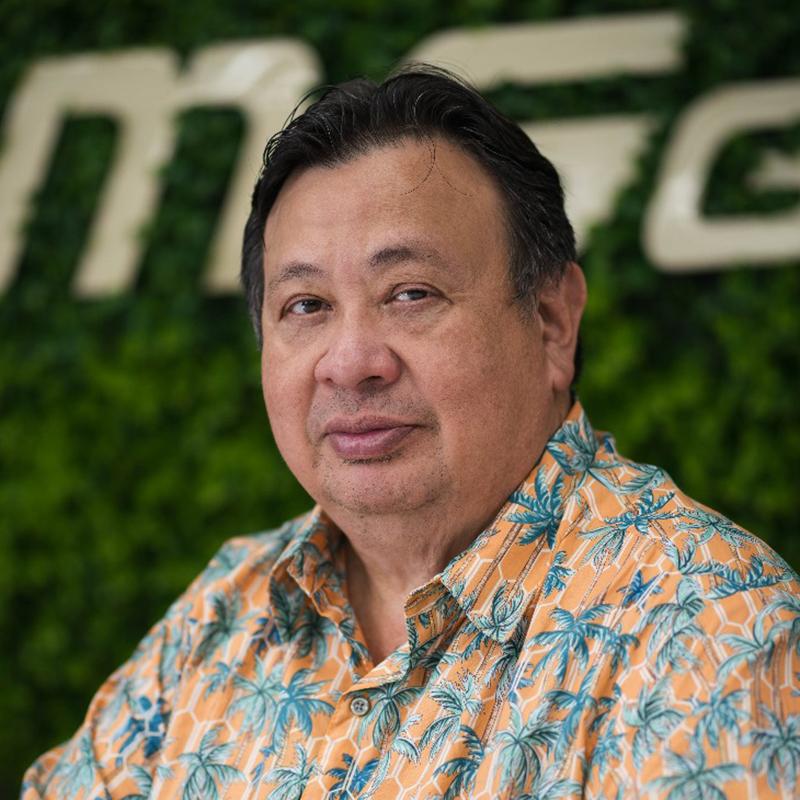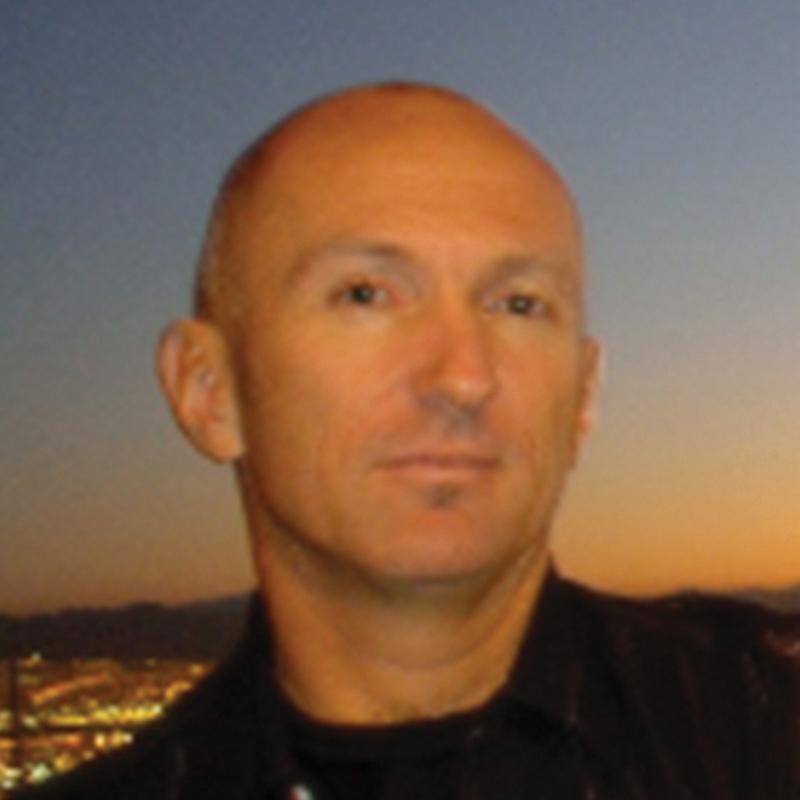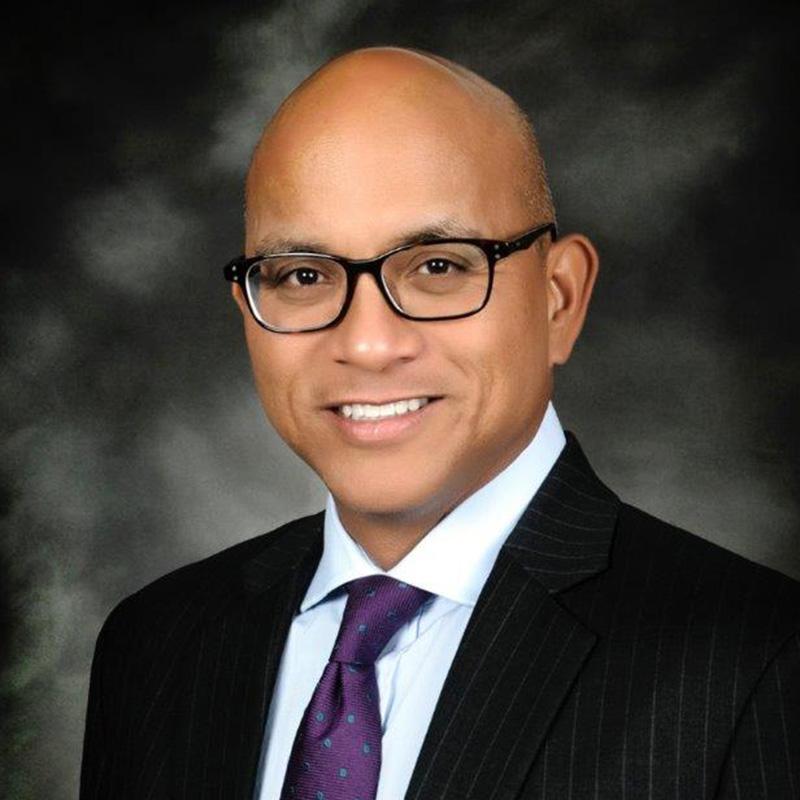
He founded Landscape Management Services Inc. in 1994. A small landscaping business, LMS quickly earned a reputation for showcasing native plants in the company’s landscaping projects.
As LMS matured, Salas led the company’s diversification into real estate rental, construction and management, endangered species protection, hazardous waste transportation and disposal, broadband and internet development, green waste recycling and sold waste disposal services, civil construction and heavy equipment sales and rentals, and logistics and transportation.
On Oct. 7, 2014, Salas opened the 17-acre Guam Windward Memorial cemetery in the Windward Hills area of Yona. The cemetery has four sections including three circular areas and a central garden, each with its own stone motif and theme. Windward Memorial offers burials, cremation niches and mausoleums.
Along the main road leading up to the entrance is a serpentine row of elevated granite pillars topped by bowls overflowing with plants.
Salas has served as chairman of the Guam Chamber of Commerce and the Guam Contractors association, as a board member of the Guam Economic Development Authority, the UOG Endowment Foundation, and the Guam Department of Parks and Recreation.
LMS was recognized with the 2013 Guam Chamber’s Excellence in Small Business Award, the 2016 National Safety Excellence Award from the Associated Builders and Contractors, and the 2017 Guam Contractors Association Contractor of the Year. LMS has repeatedly received GCA Excellence in Construction Awards.
The Guam Chamber of Commerce named Salas the 2024 Individual Laureate and inducted him into its Hall of Fame.
Salas supported the Plant Extinction Prevention Program at the University of Guam through the transplant of thousands of federally listed threatened orchids, and multiple student scholarships.
LMS developed and designed the annual Guam Visitors Bureau’s Holiday Illumination Village in Tumon for several years and has provided landscape designs and gardens for many public spaces and memorials, as well as donating local plants and trees to village mayors for their community grounds. The company donates widely to a variety of institutions and endeavors. After Typhoon Mawar, Salas provided the government with solutions and suggestions to reduce the volume of typhoon debris going to the Layon landfill.
Q: How did you come to found LMS?
A: Before 1994 I was doing business consulting. I wanted to landscape my house in 1994 but I couldn’t find anybody to do it. … We formed a partnership, four of us.
Our first client was DFS — the Tumon Galleria. Then we went to Louis Vuitton; that was our second contract. The third contract was the Onward Water Park. We were the newest [landscaping company], but one of my partners did DFS in Saipan. He was a landscape architect. The other was a horticulturalist. They had a lot of experience; I was just a salesman, but I was the local guy that was here.
We didn’t have a nursery, so we had to go house to house and buy plants, the livistona plants.
Q: What are the biggest landscaping mistakes you’ve seen in Guam?
A: That you don’t plant the tree or the palm in the right place. It could look good today, but tomorrow it could look out of place if it’s too big for the area.
Q: Tell us about the LMS plant nursery and your other facilities.
A: We have a 25-acre facility behind Father Duenas Memorial School. [Due to Typhoon Mawar] we lost some to some degree, but usually we prepare for these typhoons, so we lay down the plants.
The rebar separation — we do that on the job site. The composting — we get pallets, and we process them and then we compost them. That’s right across Polaris Point; it’s a five-acre site.
Q: How did you learn about planning and what you do?
A: You bring in people that are smarter than you. If you have the right team around you and the right people, it takes care of itself.
With Leo Palace, Sumitomo [which built the resort] pretty much showed me the way and how to do planning. It took me six months pretty much to get the permit, but we had the support.
With Fish Eye (Marine Park) they said we were going to kill the fish. We had to bring in experts to counter that. There’s more fish now than before. With Cocos Islands I worked with Japan Airlines. You learn by having all the right consultants.
Q: What would you like to see happen to professional development of landscaping?
A: There are some requirements. We don’t really have any landscape architects in Guam. I had one but he retired. … Most of the master planners for hotel resorts with a degree in master planning, they do the building, but the connectivity and the routes and the parking are done by landscapers.
In Hawaii there’s a bunch of them. In Guam we’ve got masters in planting but most of their focus is research.
I really like the Czech University of Life Sciences Prague; they have a PhD in planting. I would like to bring the professor to Guam. … That way we can have 10 or 20 students.
Q: You opened the Windward Hills Memorial cemetery on Oct. 7, 2014 with a special design or atmosphere in mind.
A: Everybody enjoys going there — it’s like a park. We created it like a village, with affordable housing - from the most expensive to the most economical. We have several scattered ash areas. … I wanted it to be a nice park for people to enjoy walking and hanging out. We hired some architects to help me implement it. … If you go to the cemetery, you can see the uniqueness of the design.
Q: Did you enjoy your work as a board member on all those civic boards?
A: It was fun working together. The hardest thing was getting all the boards to work together on the H-2B [additional foreign workers for Guam] issues.
Q: And your aims for the future?
A: My ambition now is to have a set-aside for Guam — a Super 8a set aside [granted to businesses owned and operated by socially and economically disadvantaged people. That status is held by American Native Corporations and Native Hawaiian Organizations.
Whoever wins from the four Congressional candidates — I’m going to push that agenda.
The U.S. really does a lot for Guam. After Typhoon Mawar $400 million was spent on Guam, just for the people of Guam. But the U.S. should treat us fairly. mbj
Q&A — Robert P. Salas
Q&A — Robert P. Salas
- Date Posted: May 31, 2024
- Opinion: Q&A
Recommended Articles...

Q&A — Peter “Pedro” W. Walls
Peter “Pedro” W. Walls is a founding member of the Rovers Football Club which was launched in 2008 and became a non-profit in 2014 as Rovers Club International. Walls also served as president of the soccer club from 2014 to 2019, and has been secretary of the club since 2020.
Read More 
Q&A — Gerard A. Cruz
Gerard A. Cruz is president and CEO of Community First Guam Federal Credit Union, and chief operating officer of the Asia Pacific Association of Fiduciary Studies.
Read More 













